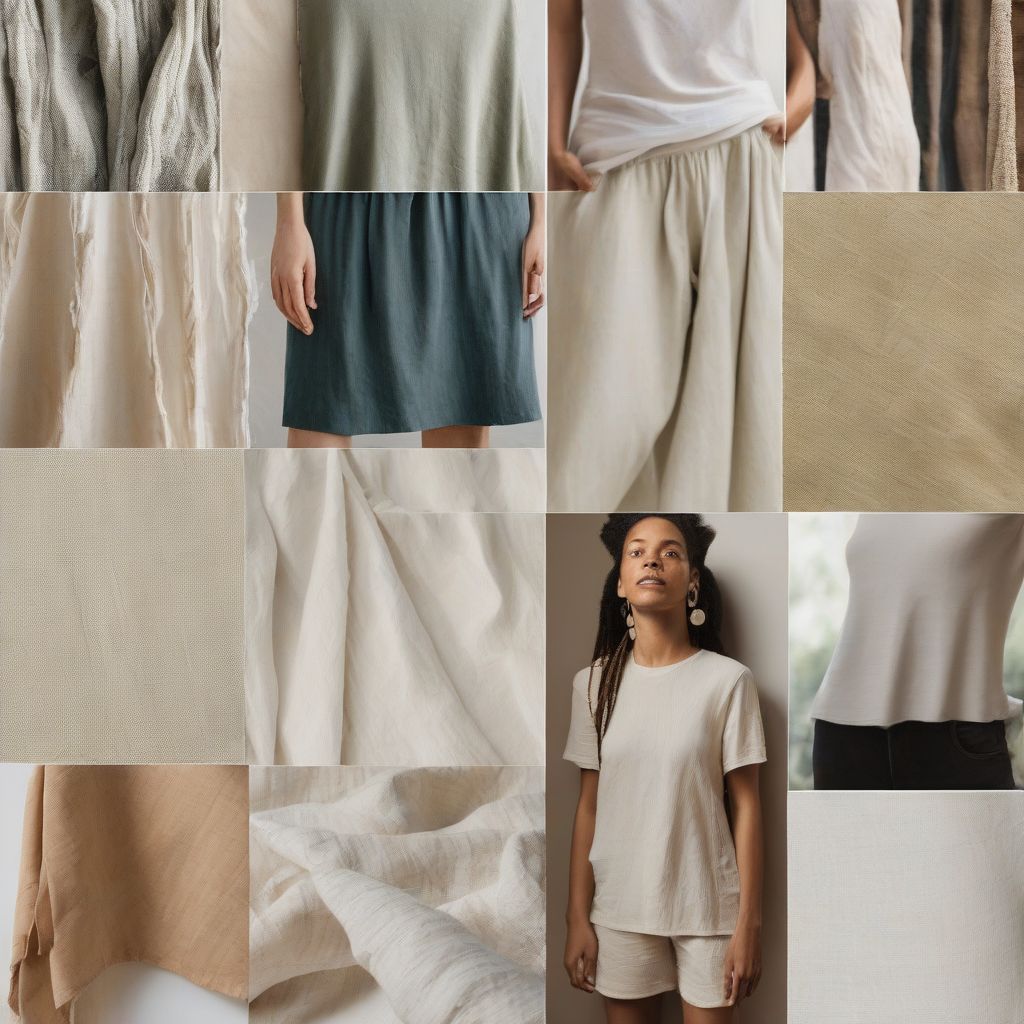Have you ever dreamt of creating clothing lines that are not only fashionable but also kind to our planet? As a nutrition and meal prepping coach, I understand the power of making conscious choices for our well-being, and that extends to the clothes we wear. Choosing eco-friendly fabrics is a powerful step towards a more sustainable fashion industry. But where do you begin? This guide is designed to help you navigate the world of sustainable fabrics and seamlessly incorporate them into your designs.
Understanding Eco-Friendly Fabrics: More Than Just a Trend
Eco-friendly fabrics, also known as sustainable fabrics, are created with a focus on minimizing environmental impact throughout their entire lifecycle. This means considering everything from the raw materials and manufacturing processes to the fabric’s durability and biodegradability.
Why Choose Eco-Friendly Fabrics?
The fashion industry is a major contributor to pollution, water usage, and greenhouse gas emissions. By choosing eco-friendly fabrics, you are:
- Reducing your environmental footprint: Opting for organic cotton over conventional cotton significantly reduces water usage and eliminates harmful pesticides.
- Conserving resources: Fabrics made from recycled materials, like recycled polyester or Econyl (made from recycled fishing nets), help conserve precious resources.
- Promoting ethical practices: Many eco-friendly fabrics are produced under fair-trade practices, ensuring safe and fair working conditions for farmers and garment workers.
 Eco-Friendly Fabrics
Eco-Friendly Fabrics
Exploring the World of Sustainable Fabric Options
From natural fibers to innovative recycled materials, the world of eco-friendly fabrics offers a diverse range of options to suit different needs and aesthetics.
Natural Wonders: Plant-Based Sustainable Fabrics
- Organic Cotton: This breathable and versatile fabric is grown without harmful pesticides and fertilizers, making it a healthier choice for both consumers and the environment.
- Linen: Known for its durability and breezy texture, linen is made from flax plants and requires less water and pesticides to grow compared to cotton.
- Hemp: Hemp fabric is incredibly durable and naturally resistant to pests, reducing the need for pesticides. It also grows quickly and requires less water than cotton.
- Tencel (Lyocell): Derived from sustainably harvested wood pulp, Tencel is celebrated for its softness, breathability, and biodegradable nature.
Innovative Solutions: Recycled and Semi-Synthetic Eco-Friendly Fabrics
- Recycled Polyester (rPET): Made from post-consumer plastic bottles, rPET helps reduce plastic waste and requires less energy to produce than virgin polyester.
- Econyl: This innovative fabric is made from recycled nylon waste, including fishing nets, fabric scraps, and industrial plastic.
- Piatex: Made from pineapple leaf fibers, Piatex offers a unique leather alternative that is both sustainable and cruelty-free.
Choosing the Right Fabric for Your Designs
When choosing fabrics, consider the following:
- Functionality: The fabric’s drape, durability, and breathability will determine its suitability for different garments.
- Aesthetics: Each fabric has unique textures and properties that contribute to the overall look and feel of the garment.
- Target Audience: Consider your target market’s values and preferences. Are they actively seeking eco-friendly options?
Design Tips: Seamlessly Integrating Eco-Friendly Fabrics
- Start Small: If you’re new to sustainable fabrics, begin by incorporating one or two eco-friendly options into your existing collections.
- Embrace Transparency: Be open about your fabric choices and educate your consumers about the benefits of eco-friendly fabrics.
- Think Beyond the Fabric: Sustainability extends beyond just the materials. Consider eco-friendly dyes, minimize waste in your production process, and opt for sustainable packaging options.
- Collaborate with Sustainable Suppliers: Partner with suppliers who share your commitment to ethical and eco-conscious practices.
- Get Creative with Design: Eco-friendly fabrics can inspire unique designs and aesthetics. Embrace the challenge of designing with a sustainable mindset.
Conclusion: Weaving a Sustainable Future for Fashion
Incorporating eco-friendly fabrics into your designs is a powerful way to contribute to a more sustainable and ethical fashion industry. By understanding the different types of sustainable fabrics available and making conscious design choices, you can create beautiful, high-quality garments that are both stylish and environmentally responsible. Let’s work together to weave a future where fashion and sustainability go hand in hand.
Do you have any questions about eco-friendly fabrics or tips to share? We’d love to hear from you in the comments below!
[amazon bestseller=”Sustainable Fashion”]
